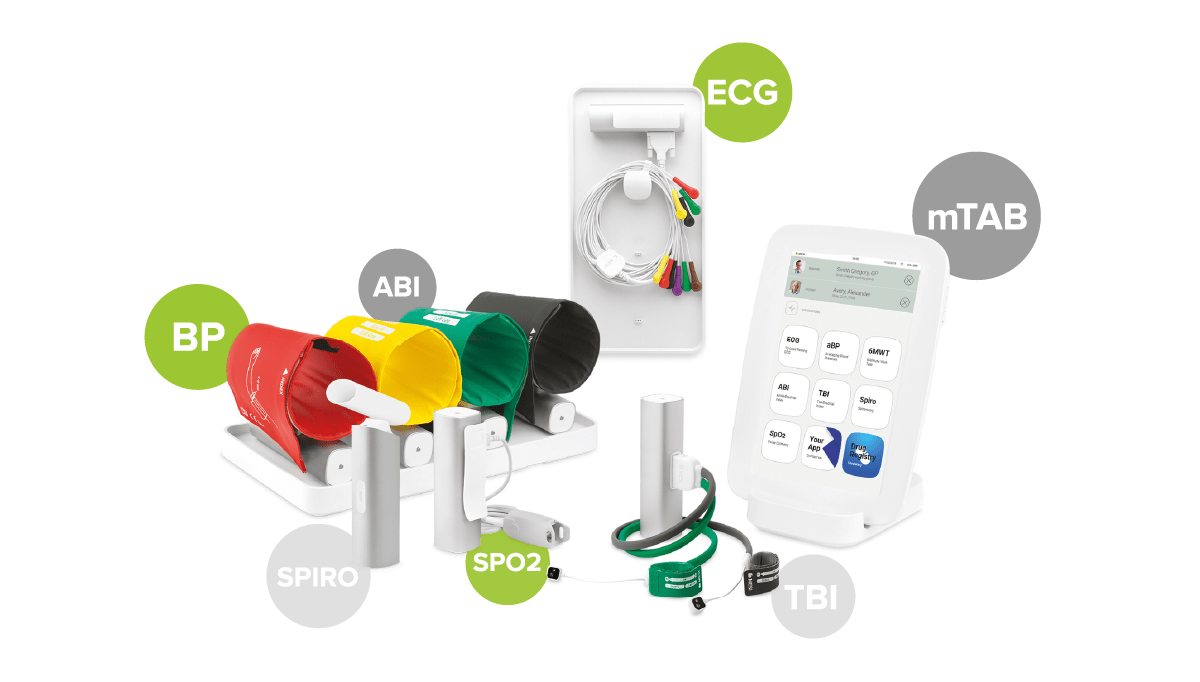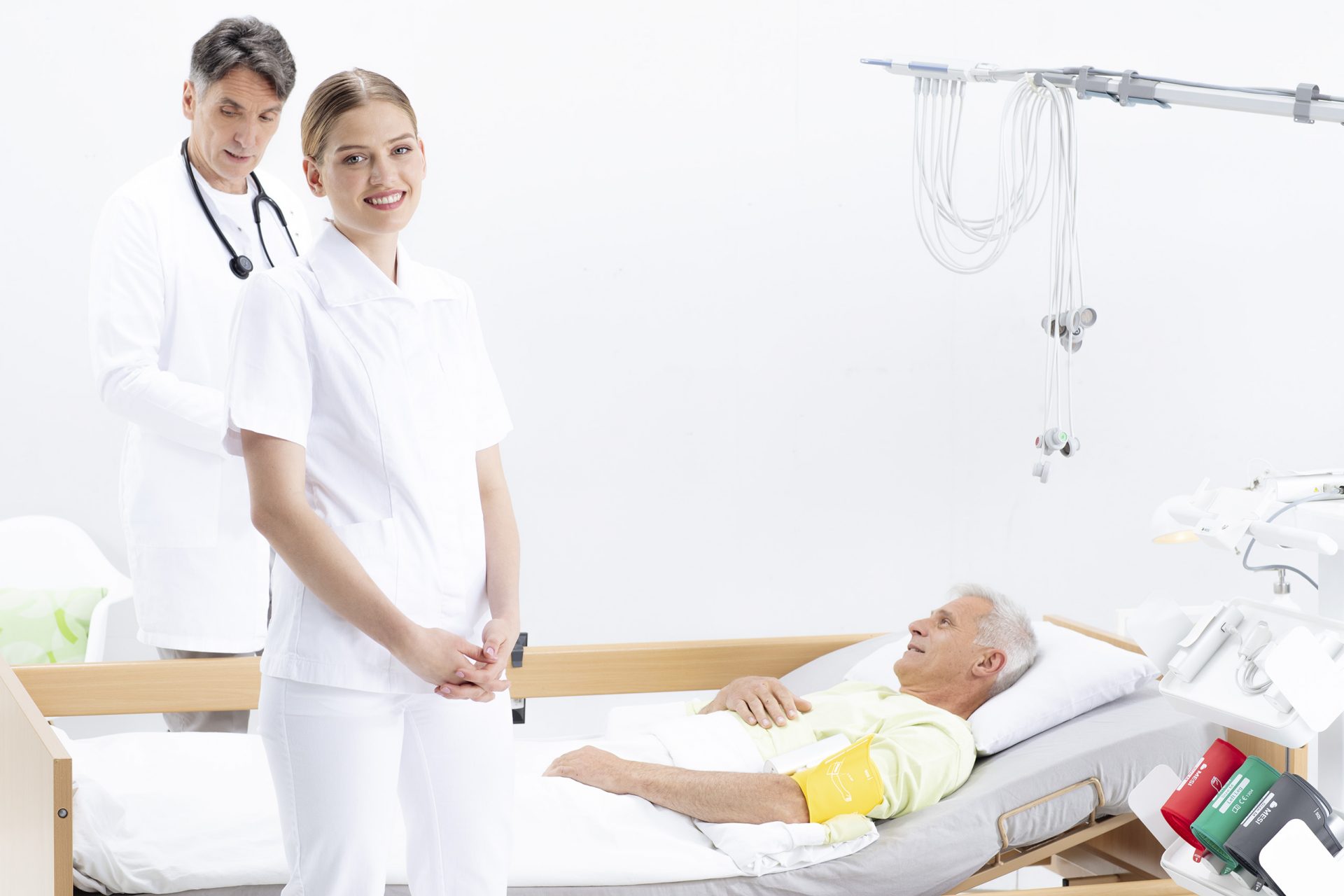How to make nursing home care more effective

The elderly population in need of nursing home care is growing worldwide [1]; however, the number of available medical professionals is on the decline, with an impending global shortage of 17 million health workers [2].
A major challenge for nursing home management and staff is connected with logistics: making a diagnosis often requires transfers to GP practices or even hospitals for some of the most basic diagnostics check-ups [3]. This results in extra work for the nursing home staff, extra time in reaching the diagnostic facility, and transfer costs. The root of this problem is limited diagnostic equipment at nursing homes and a physical distance to the resident's GP, who is always external.
This article discusses the technological solutions for making basic diagnostic measurements at the nursing home itself and instantly sharing them with the GP or hospital. This means less work for the staff, less costs and a faster diagnosis. The result is more effective nursing home care and increased life quality of the residents. Hospitalisations are a big stressor for the resident and their loved ones, and must be prevented if they are not necessary.
In this blog you will learn:
What are the diagnostic challenges at nursing homes?
Why are unnecessary hospitalisations a problem?
How can digital technology help with nursing home diagnostics?
How can digital technology enhance the quality of life of nursing home residents?
What are the diagnostic challenges in nursing homes?
The biggest diagnostic challenge at nursing homes today is fragmented diagnostics, i.e. diagnostics that is performed in a number of locations, often for the most basic measurements. In case of an unclear clinical situation with a nursing home resident, the clock begins to tick for two reasons. Firstly, it is highly likely that a GP is not present at that moment. Secondly, even if there is one, even the most basic diagnostic tools are generally not available. As a result, hospitalisations for diagnostic purposes are quite frequent [3].
Research shows that as many as 35% of nursing facility hospitalisations are potentially avoidable. [4]
Why are unnecessary hospitalisations a problem?
The health perspective
Nursing home residents are one of the most vulnerable populations in society. Even when not in this type of care, the elderly are threatened by infections because their immune system is generally weaker. Age-related changes in adaptive and innate immunity may also result in reduced responsiveness to vaccinations, systemic pathogen infections (e.g. with Listeria) and reactivated lated infections (e.g. Mycobacteria, varicella zoster virus). Furthermore, frequent antibiotic treatments can lead to infections with antibiotic-resistant pathogens. [6]
Due to dementia, immobility, incontinence and commorbidities (e.g. soft tissue or pulmonary edema), nursing home residents are at high risk of infectious diseases. The most frequent are pneumonias, infections of the urinary tract, gastroenteritis and skin infections. [5]
The first consequence in case of unnecessary hospitalisation is stress caused to the resident and their relatives. Secondly, “nursing home residents can serve as unintentional vectors that shuttle clinically relevant pathogens from the nursing home to the hospital, and back to the nursing home, and impact on the infectious disease burden of an entire community” [6].
It is more sensible and safer to make an initial diagnosis by performing the basis diagnostic measurements on-site and immediately sharing them with the GP or hospital in digital form.
The financial perspective
Although a short hospitalisation of a resident does not always result in loss of income for the nursing home, unnecessary hospitalisations give rise to expenses for the health insurance company or for the resident in case of an excess insurance policy.
However, income loss for the nursing home can occur if the resident gets infected in hospital and requires hospital readmission for a longer time. More dangerously, a hospital-acquired infection can spread to other nursing home residents. This can result in more hospitalisations, with considerable financial consequences.
The organizational perspective
Fragmented diagnostics and unnecessary hospitalisations strain the already limited staff resources of all parties – nursing home carers, nurses, GPs and hospitals. They result in additional work like transport organisation, intense communication and a number of diagnostic check-ups at multiple locations. 'Analog workflow' like sending papers by fax and making multiple phonecalls for notifying their recipient is still a very important part of healthcare [8], and results in additonal time lost.
How can digital technology help with nursing home diagnostics?
Digital technology enables a number of effective diagnostic measurements without the doctor's presence and immediate communication of their results to the distanced GP or hospital.
The MESI mTABLET combines ECG, blood pressure, oximetry, spirometry as well as ABI and TBI on one device. All the measurements are instantly saved into the patient’s electronic record and can be instantly forwarded either to their GP or a specialist.

The MESI mTABLET comprehensive diagnostic system has a number of advantages for the nursing home, its medical staff and its residents, both in terms of regular check-ups and effective diagnostic approach in sudden unclear health situations.
Regular check-ups
With the possibility of six diagnostic measurements on the nursing home premises, the residents’ health status can be monitored on a regular basis as no transfers to the GP are needed. The elderly are a risk group for PAD, especially when diabetic; the MESI mTABLET enables one-minute ABI or TBI screenings on-location.

In addition to the six basic diagnostic measurements stated above, the MESI mTABLET also enables the storing of other patient information (e.g. temperature, weight and general health status). Its users (GPs, nurses or other health professionals depending on the country) can create customised patient examination protocols in the Protocol App, which guides them through every step of the patient exam and interview. This enables the same level of care for each resident even if the staff changes. Taking pictures of wounds and other skin conditions is also possible with the Photo App. All information and measurements are stored in one place – the patient’s digital file, and can be instantly retrieved for comparison when there is a sudden health deterioration or condition.
Comprehensive diagnostic check in case of unclear health situation
The MESI mTABLET fits into a carry-on bag or on a trolley, which means that no special diagnostic room is necessary as it can easily be transported into a patient’s room in case of emergency.
Whether the GP is on the nursing home premises or makes visits when a health deterioration occurs, they can instantly receive the measurement results from the nurse and review them. The measurement results are anonymised, so they can also be sent to a specialist or hospital. In this way, a well-informed decision can be made as to the next step in the diagnostic and treatment process.
How can digital technology enhance the quality of life of nursing home residents?
Until the 20th century, infections were the most frequent reason of mortality. With the development of antibiotics, vaccinations, antiseptic techniques and other health measures, this is no longer the case in developed nations. The leading causes of mortality are now chronic and degenerative conditions. However, due to multiple comorbidities, many elderly people experience functional decline and dependency leading to nursing home care [6]. This makes any infections highly risky, and preventing unnecessary hospitalisations is one of the ways to avoid them.
The MESI mTABLET has great potential in supporting nursing homes and GPs in their mission to care for the residents, both in terms of providing regular check-ups and comprehensive diagnostics in case of sudden health deterioration. For GPs, this makes it easier to decide whether hospitalisation or an emergency GP visit is necessary. This reduces the stress of the residents and their families, and enhances the life quality of those in nursing home care.
Less fragmented diagnostic services are not only more effective but also cheaper. Digital technology enables fast information sharing and thus faster cooperation between healthcare providers. Innovations will be decisive in the future of the nursing home sector, especially due to fewer resources, and will drive the development towards the highest possible quality of care [7]. The MESI mTABLET aims to be a valuable tool in this field.
Book a demonstration